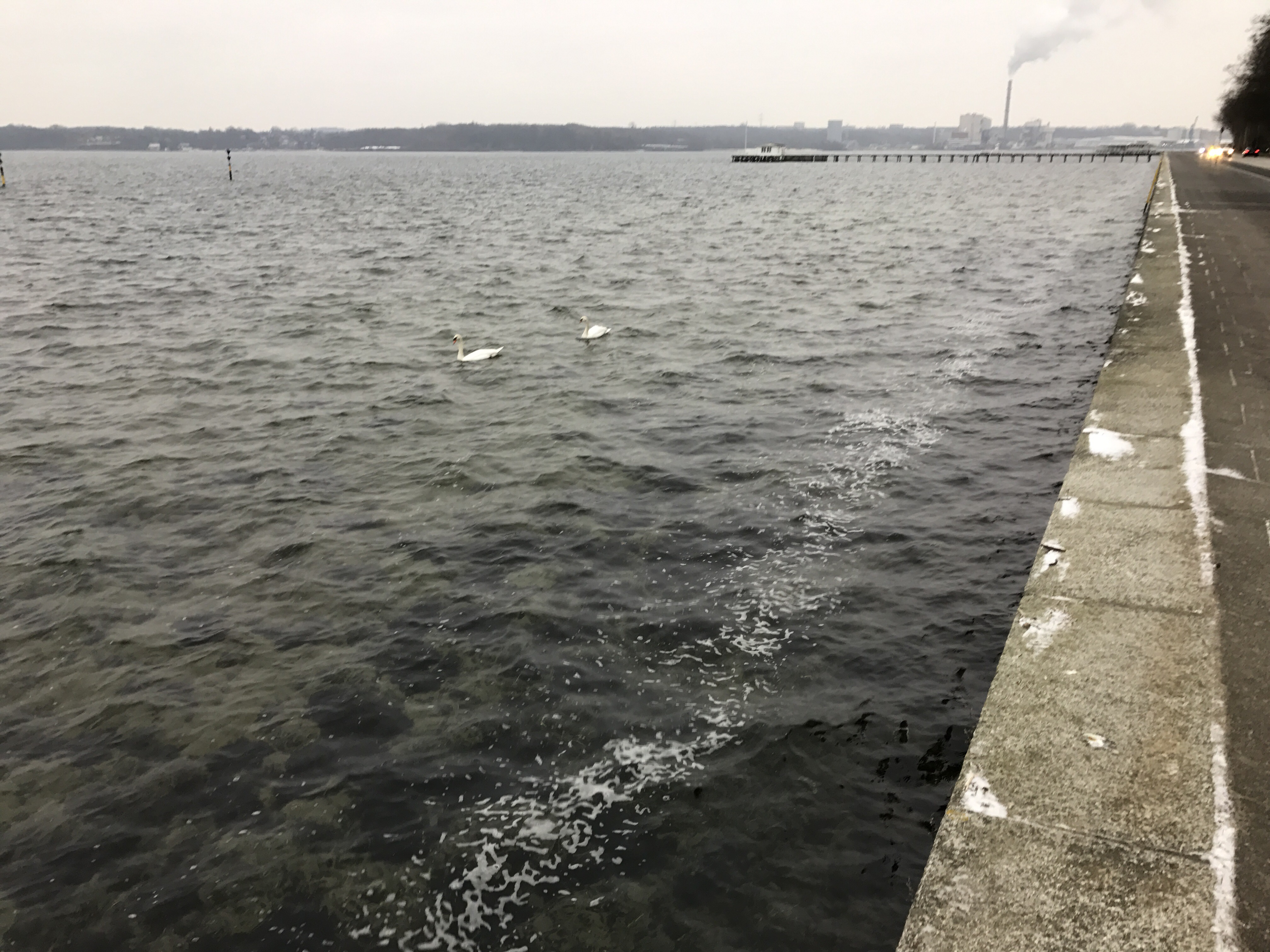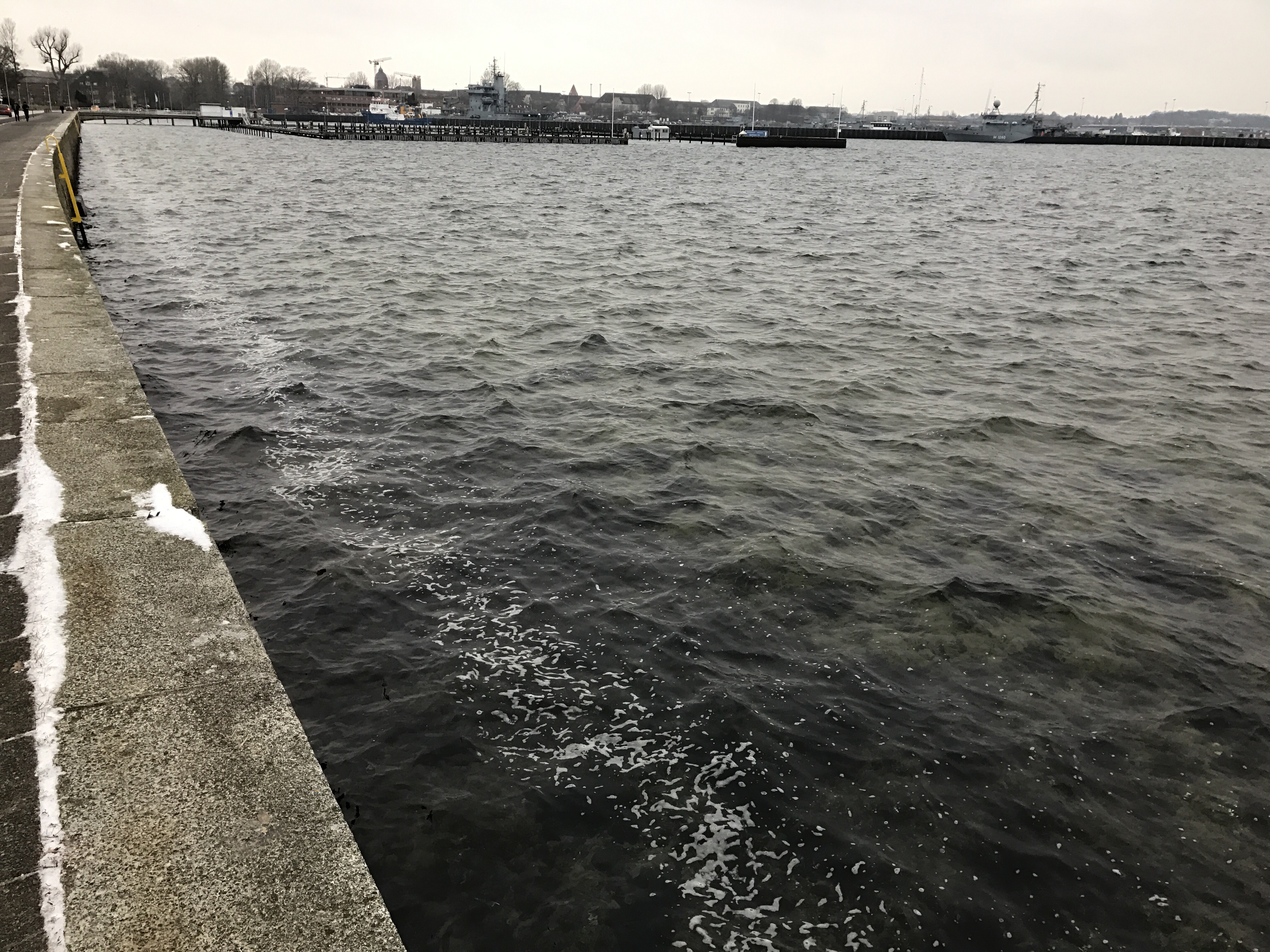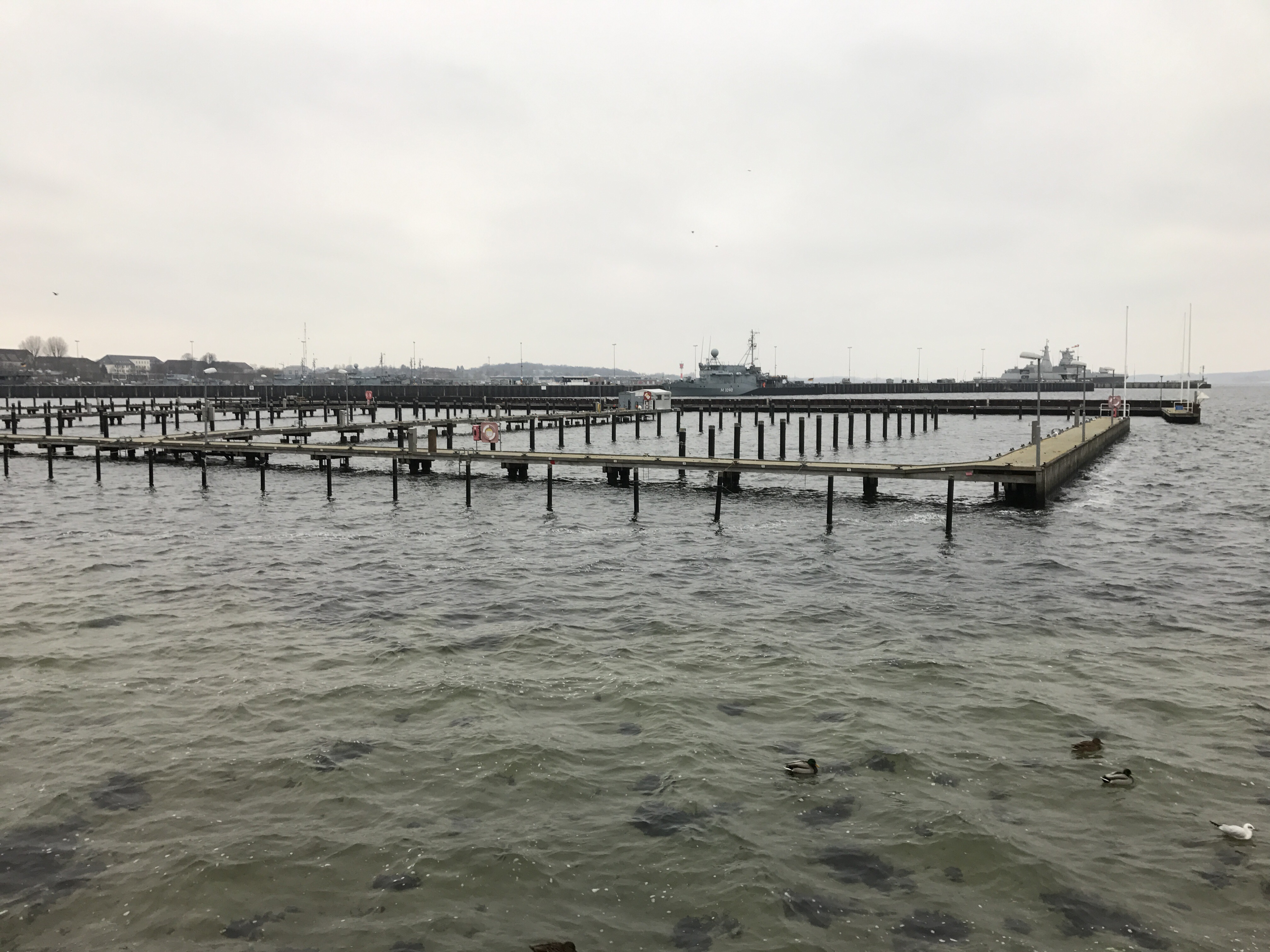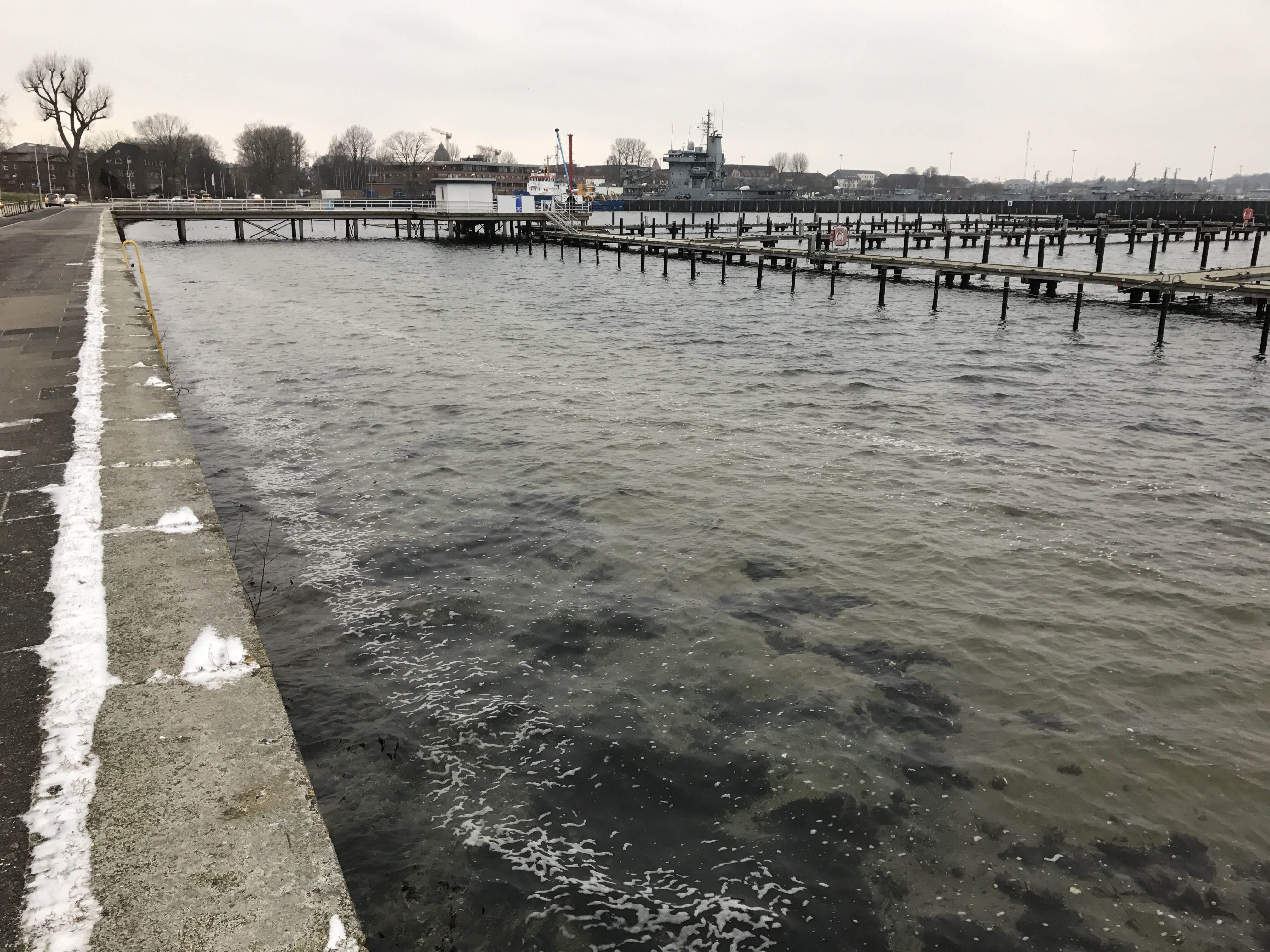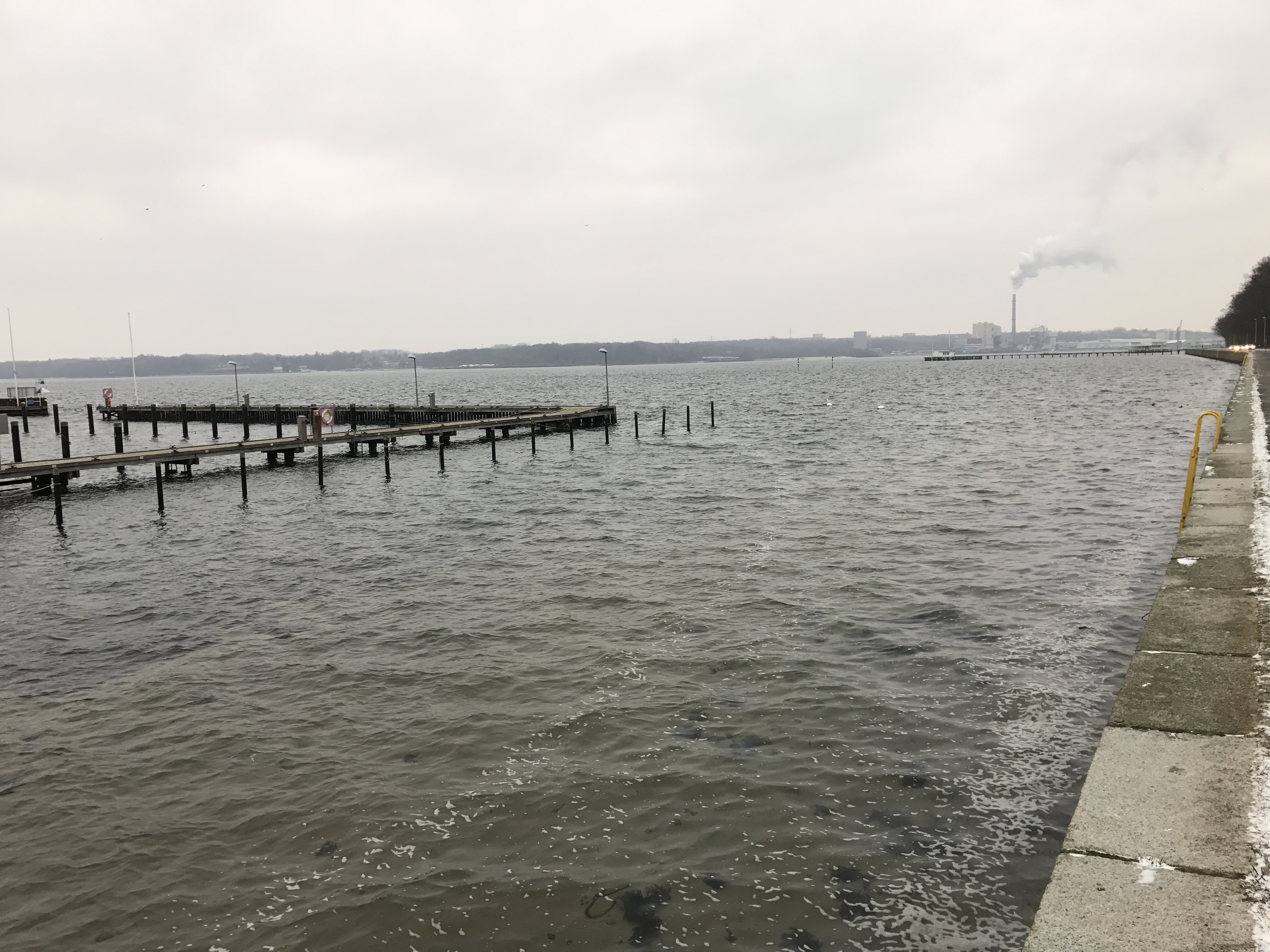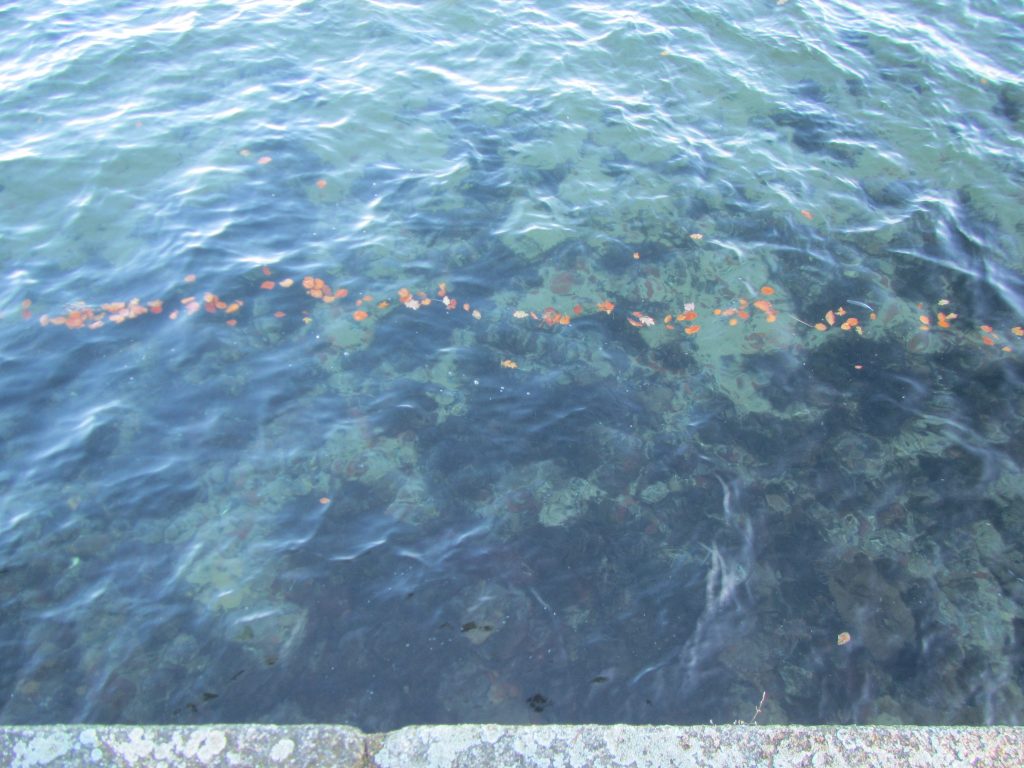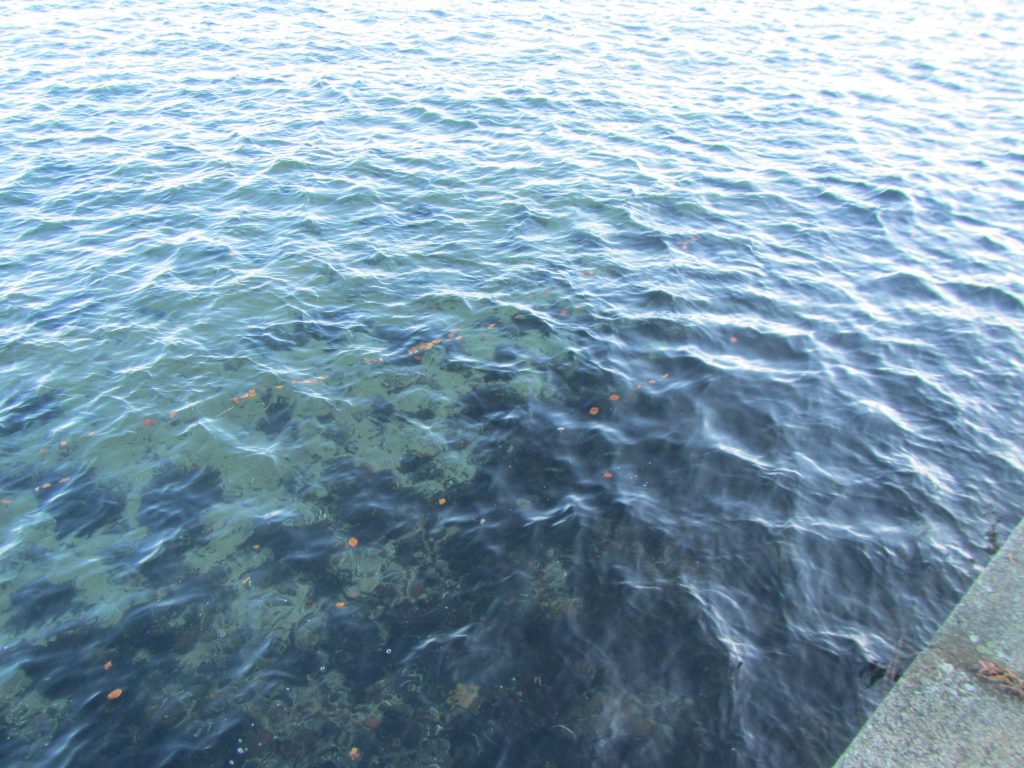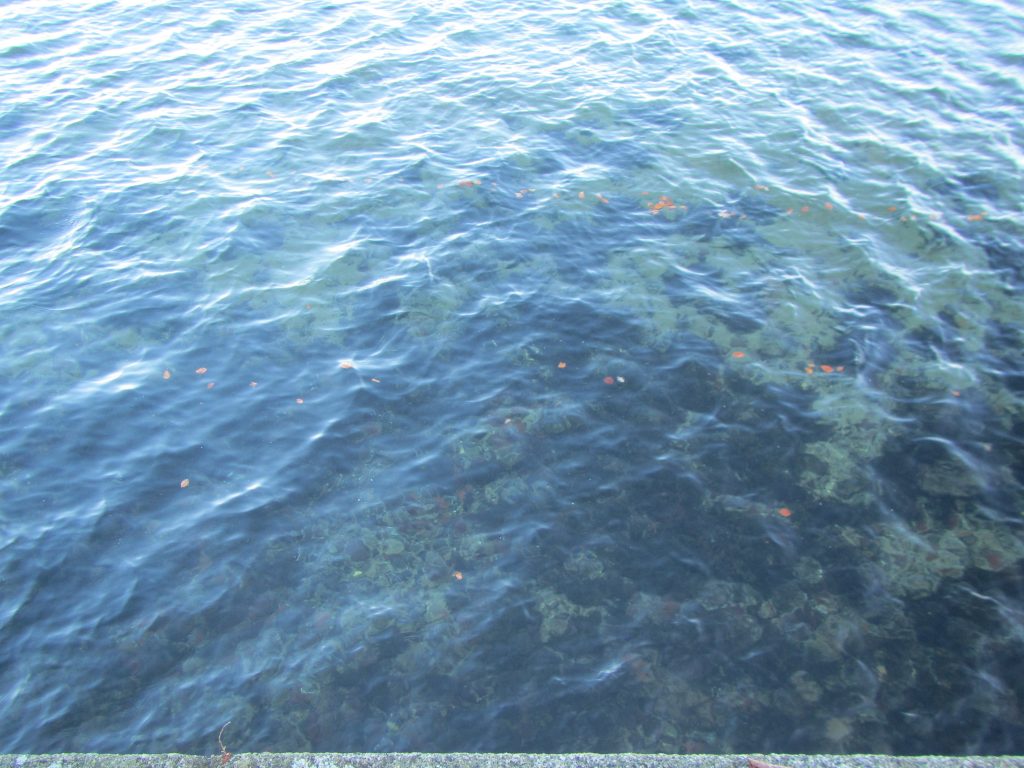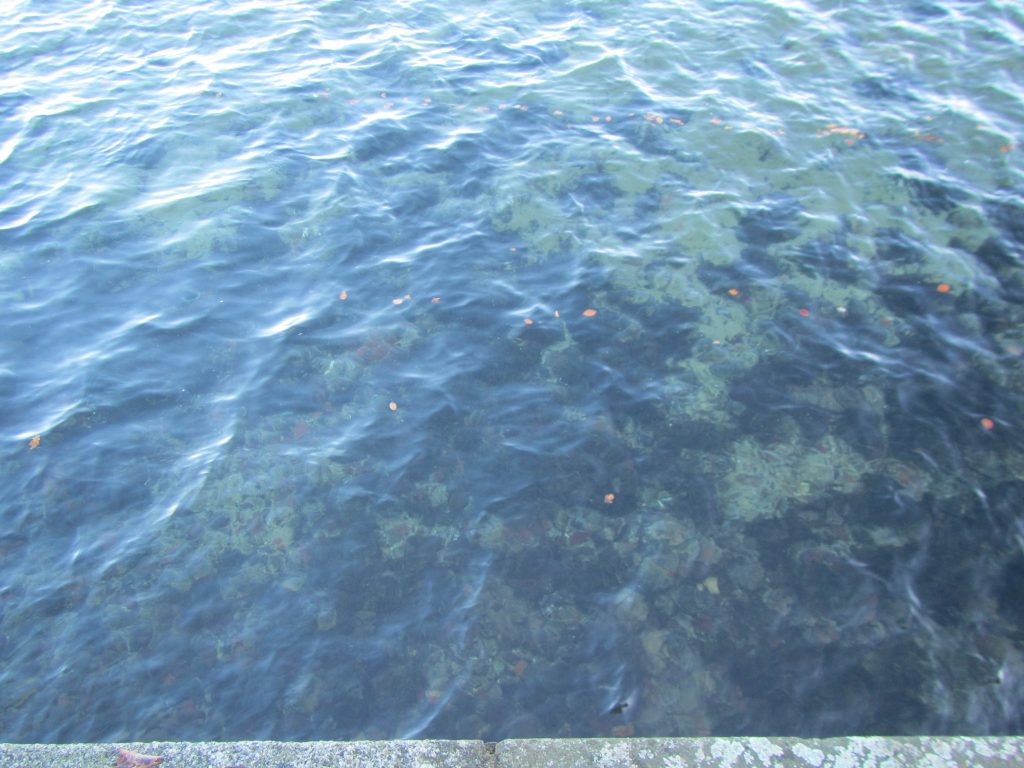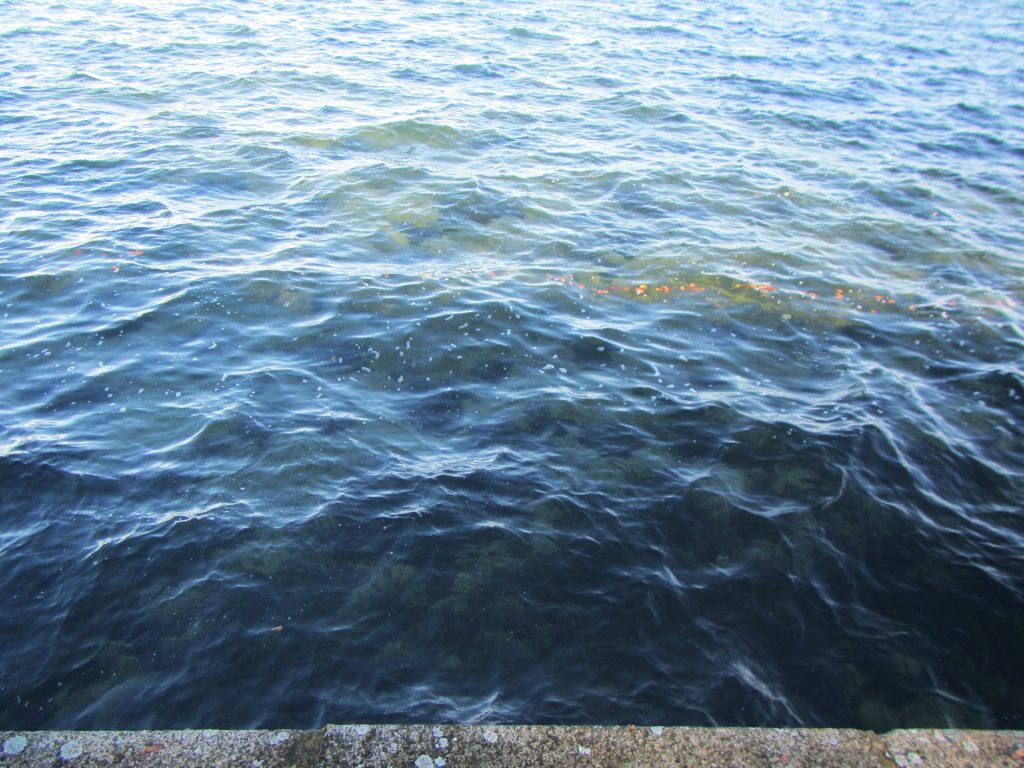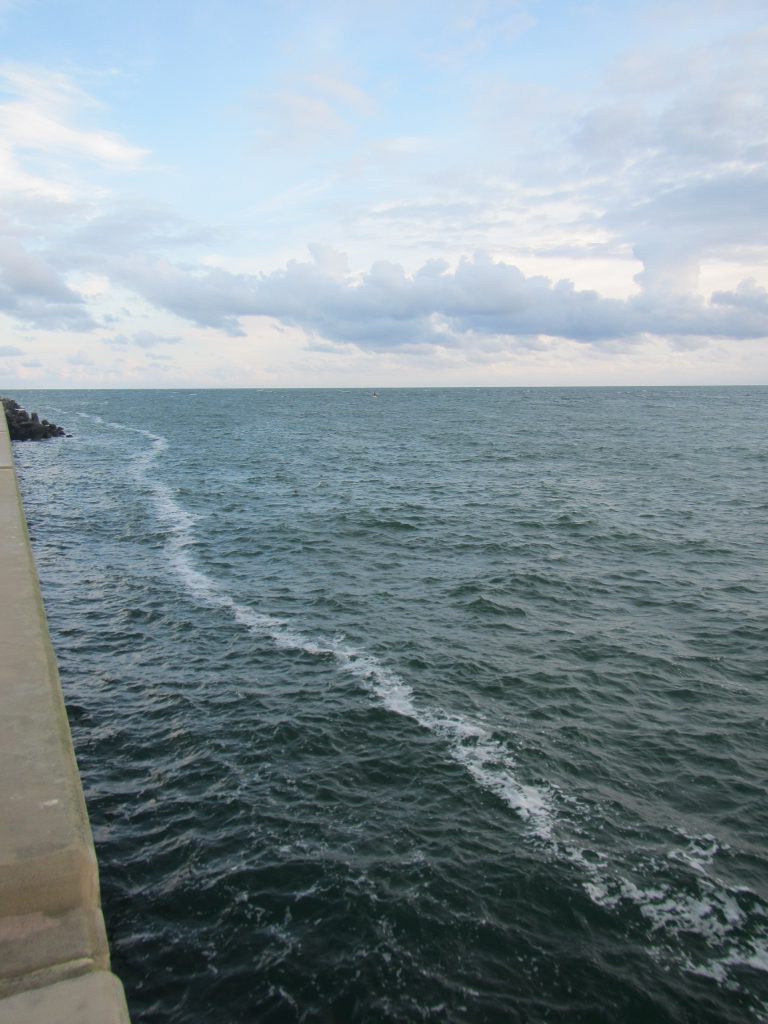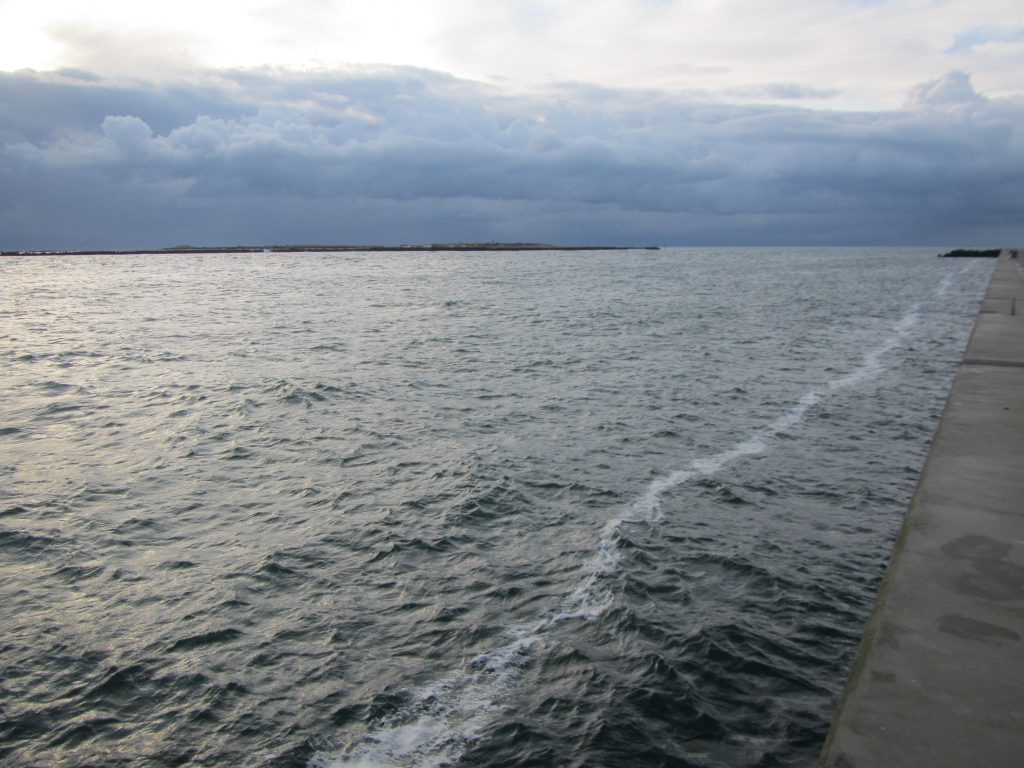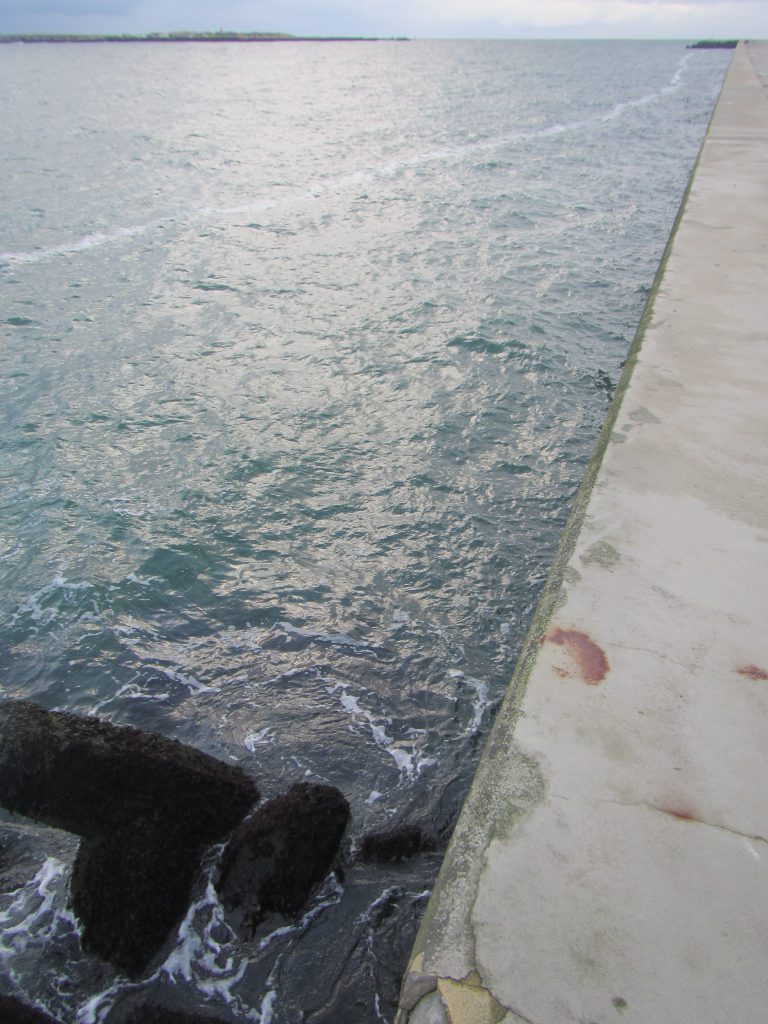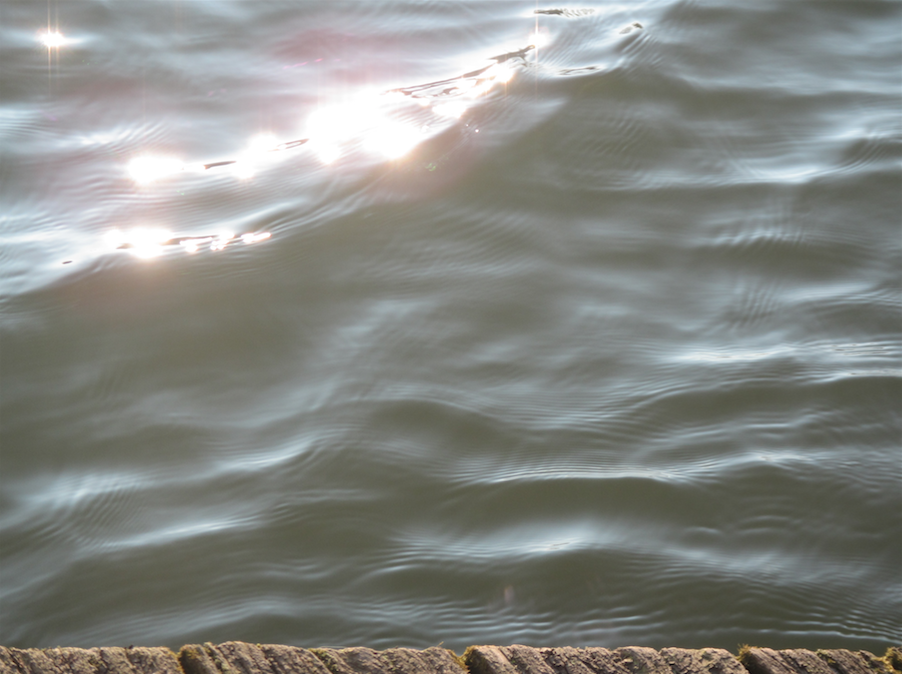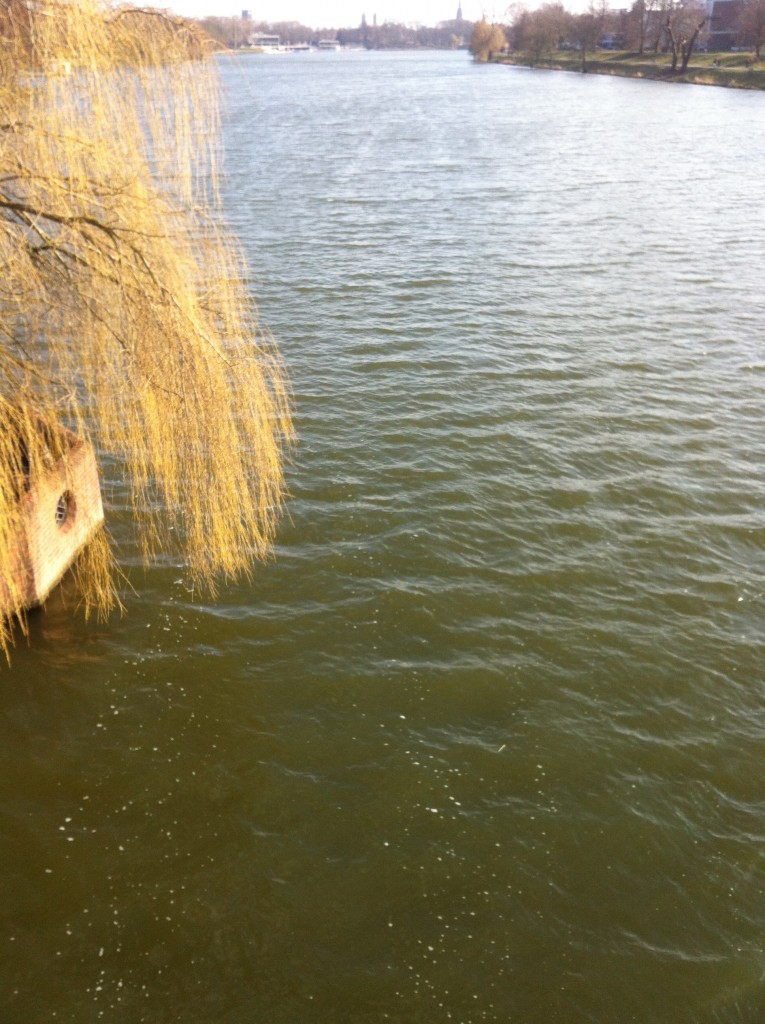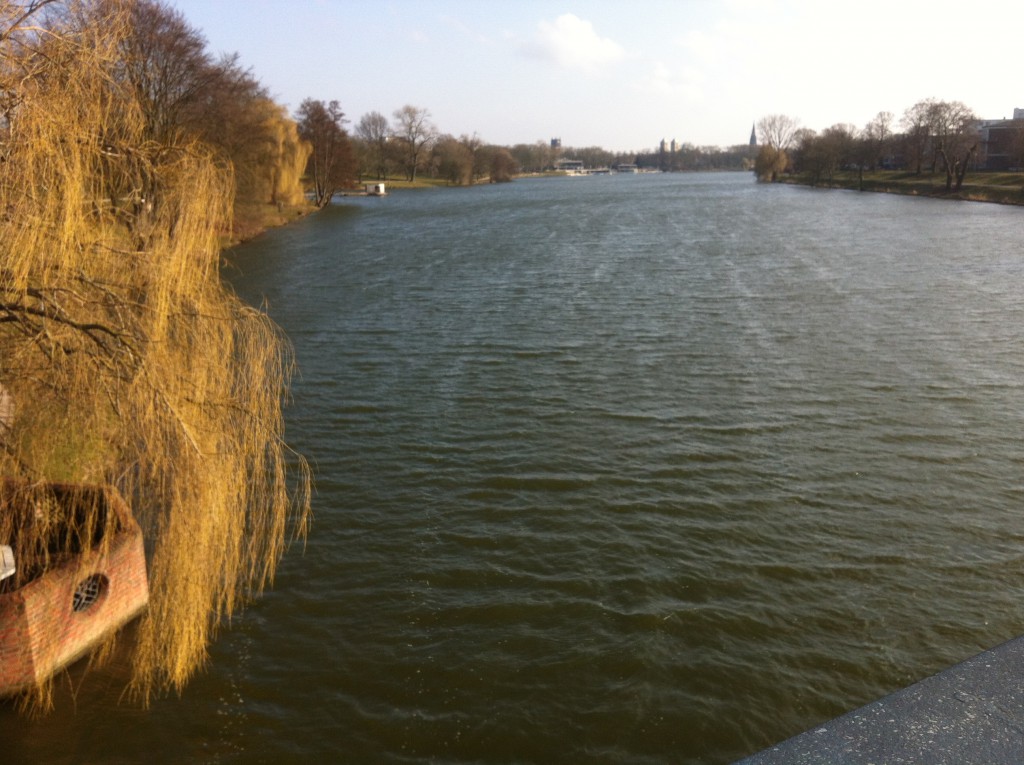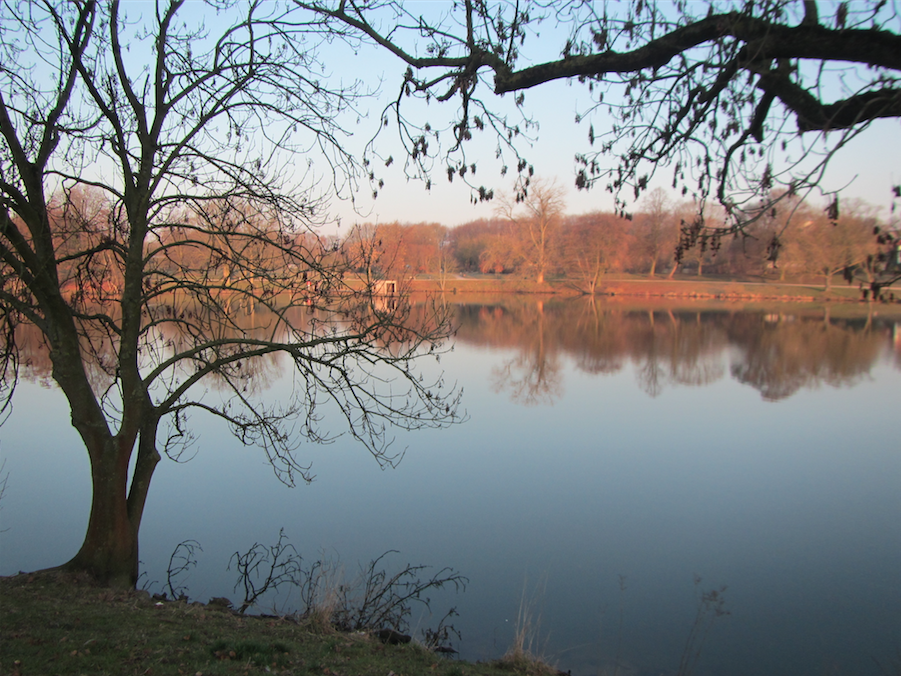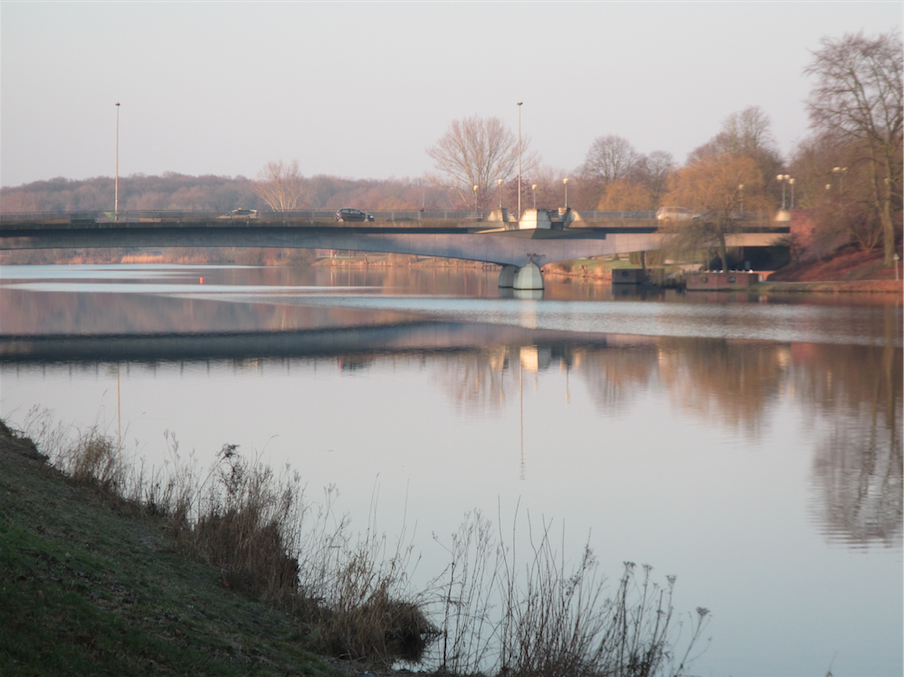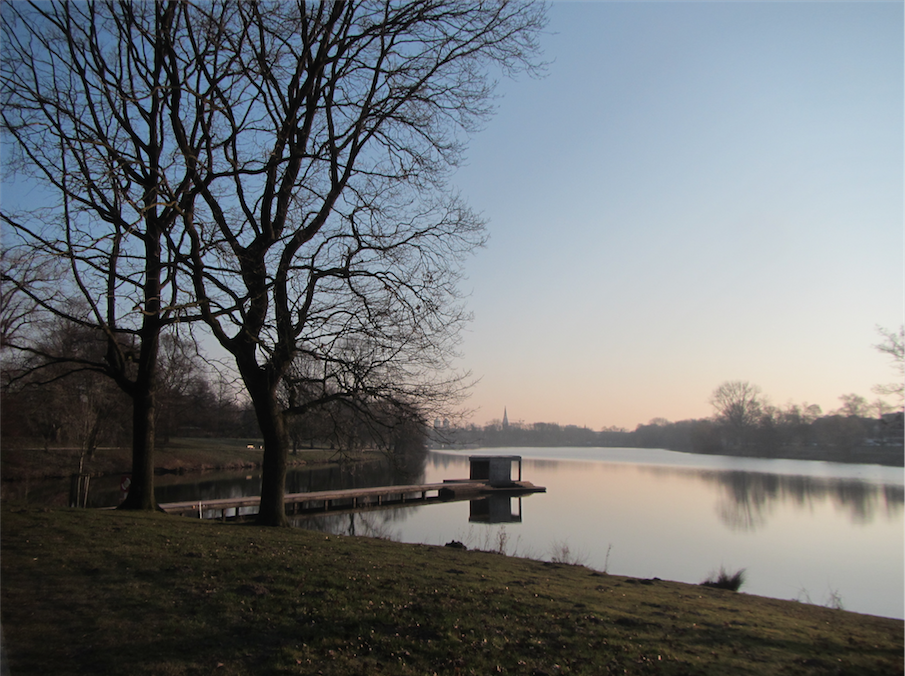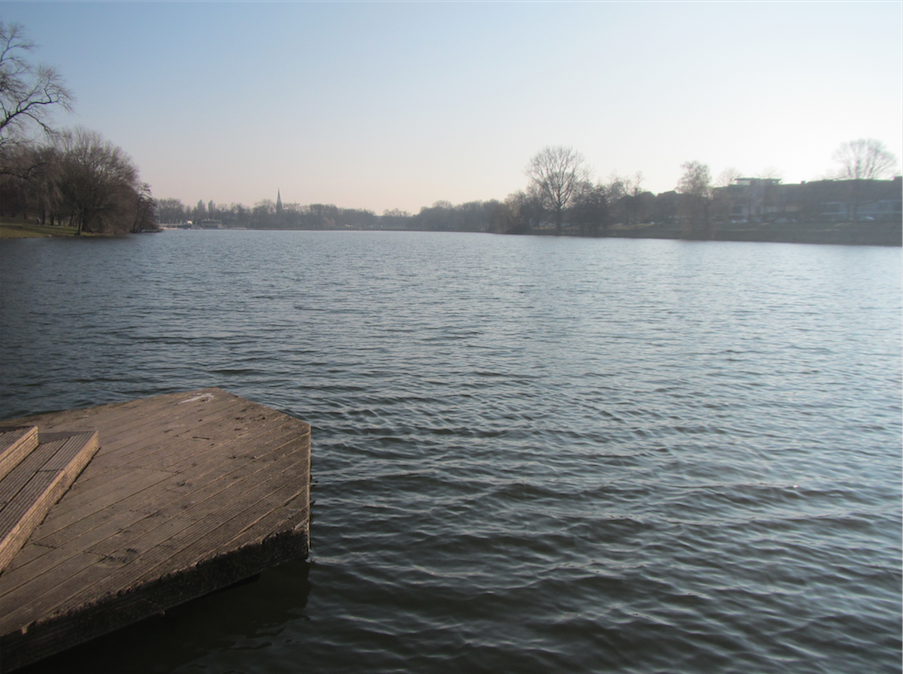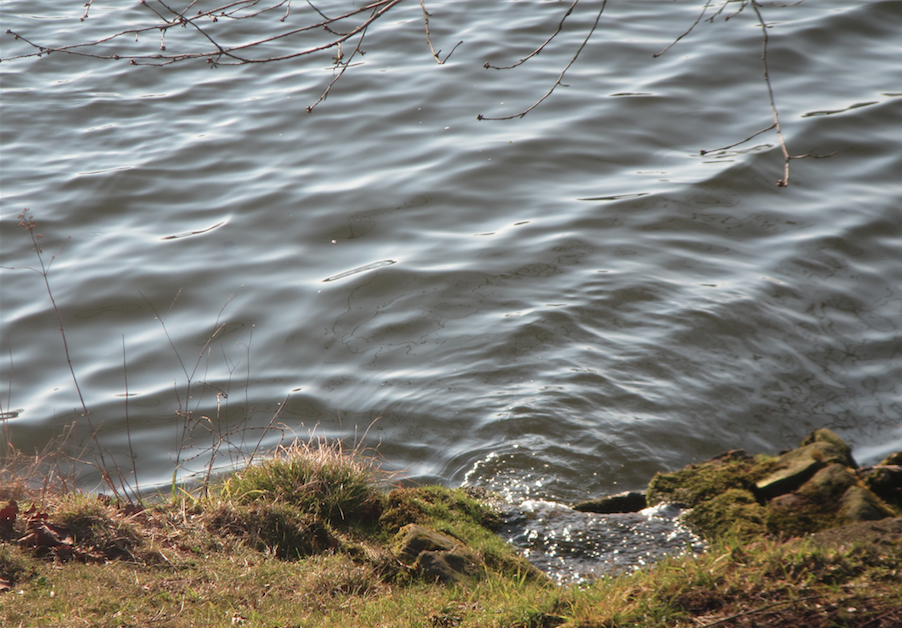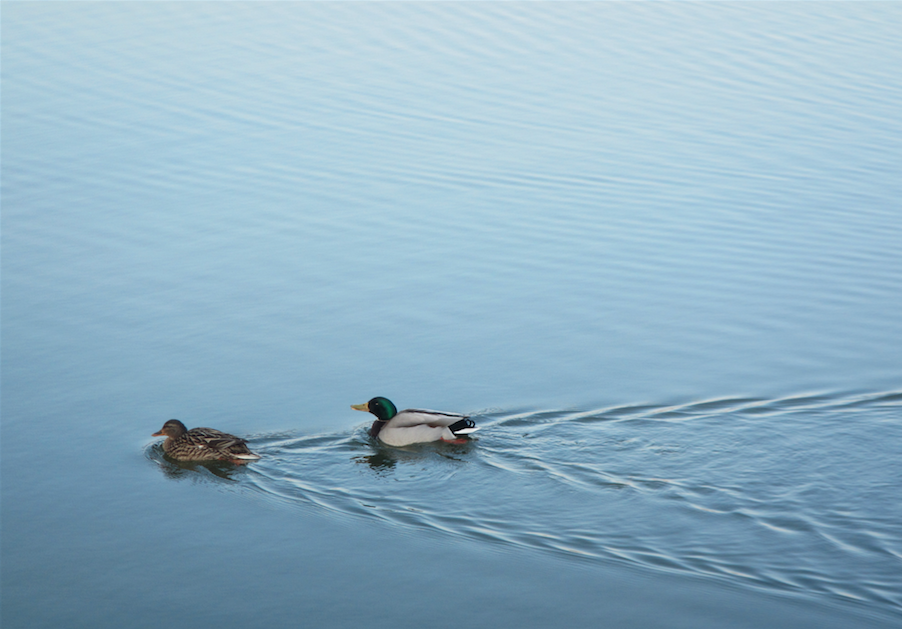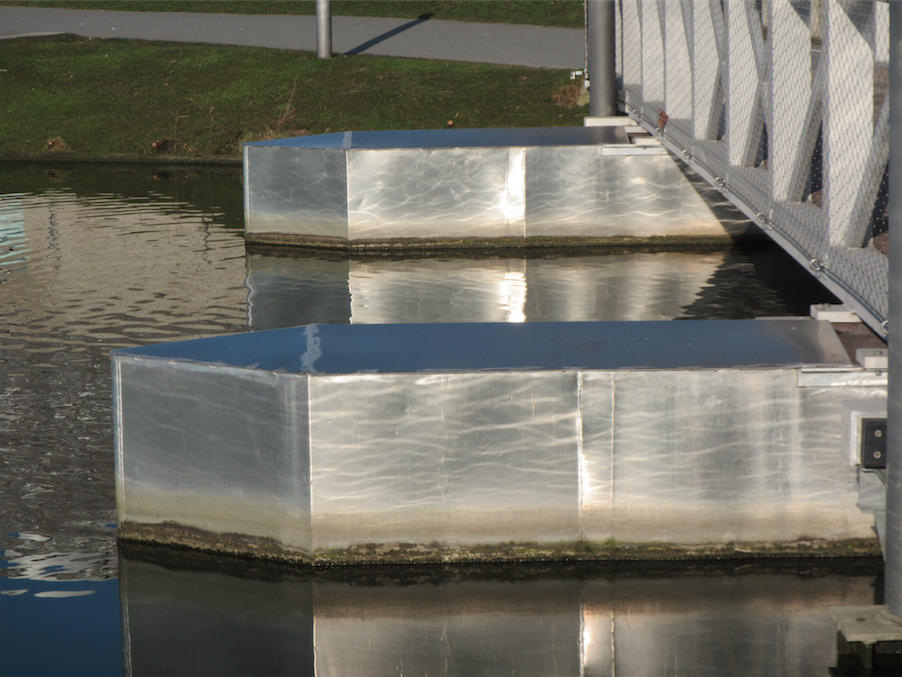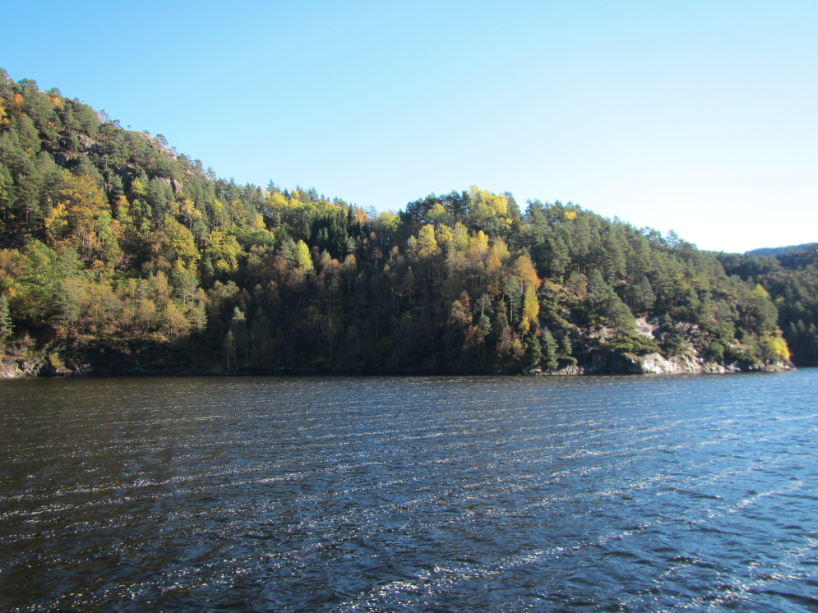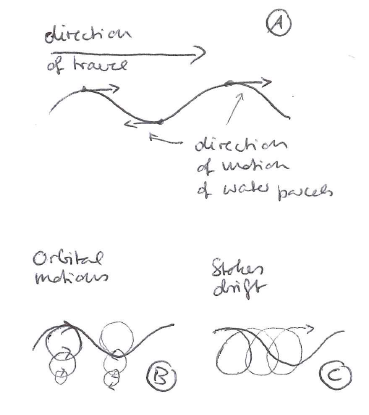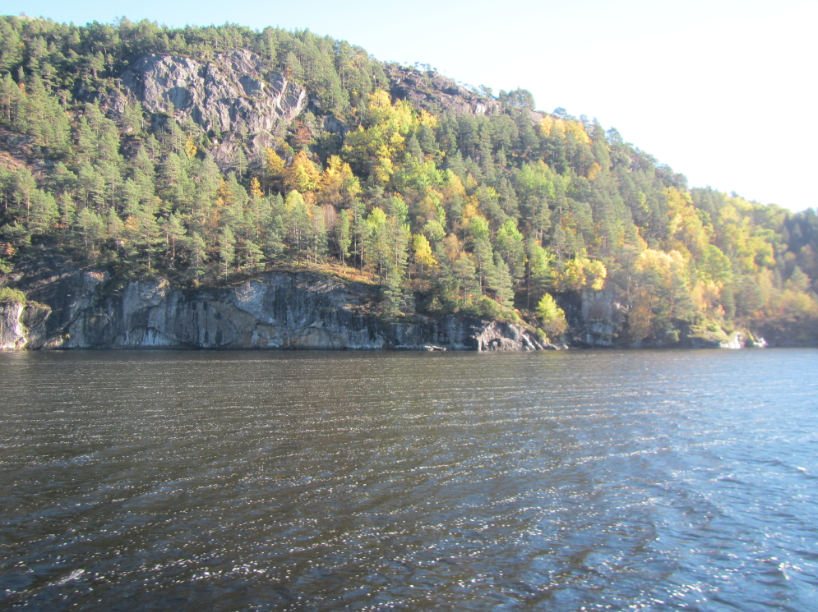I think I might be getting closer to understanding the foam stripe mystery. Remember how we’ve always observed them going in parallel to the coast?
Yesterday I saw this again, looking up the coast in one direction…
…and down the other direction. I’ve had the hypothesis that they might be somehow related to Langmuir circulation, but in any case there must be some kind of convergence zone there.
But let’s move closer to that pier we see in the background of the picture above. Here we see a foam stripe parallel to the pier, but at a 90 degree angle to the see wall that I am standing on and that has a foam stripe running in parallel, too! And even more curious: at the edge of the pier, the foam strip detaches and runs toward the coast! See?
Looking down the coast again, we see that foam stripe coming in at an angle, and running in parallel to the coastal stripe in the far back.
Looking up the coast from the pier right where it meets the sea wall, we see both foam stripes running in parallel (as we saw in the picture above):
I think what is happening here is that the foam of the foam stripes doesn’t form locally (which was an implicit assumption I had whenever I was staring at the water, trying to observe more wave breaking there than in other places). Instead, foam forms somewhere else (probably pretty much all over the place) and just accumulates in those stripes. That’s actually pretty likely if we think back to the eel grass or leaf stripes: the eel grass and leaves were clearly advected from somewhere else, too. And actually that’s the same with Langmuir circulation, too: stuff just accumulates in convergence zones but isn’t formed there.
So for some reason there is a convergence parallel to the sea wall as well as the pier, and foam just accumulates there. And as for the part of the stripe that detaches from the pier and runs to the coast? It is going more or less downwind. So it’s probably just part of the stripe parallel to the pier that gets advected around the corner and blown toward the coast.
Why does that stripe end up in parallel to the one at the coast rather than joining it? I don’t know yet. But at least now I only need to figure out why there are convergences in some places and I can let go of the obsession with foam formation in the stripe itself :-)
Do you have any idea that might explain those foam stripes? I’d love to hear from you!
